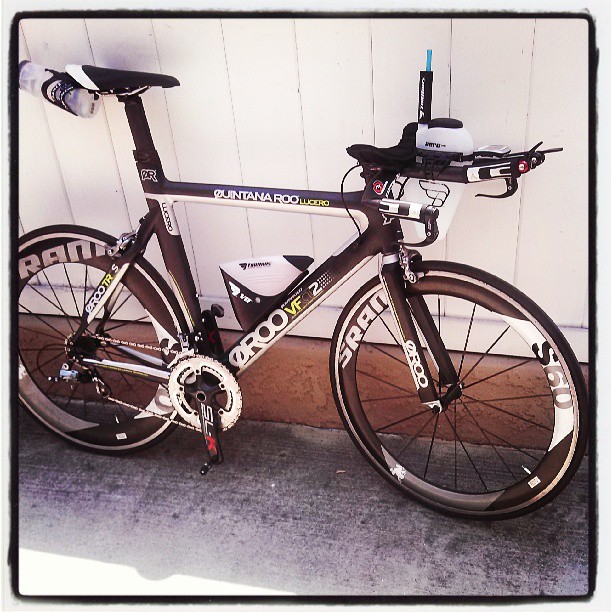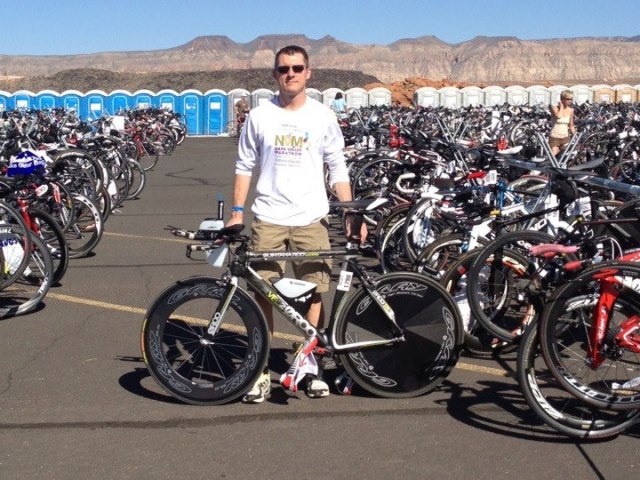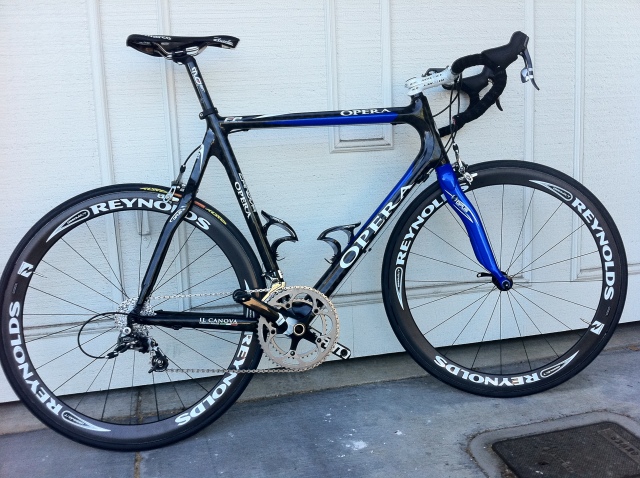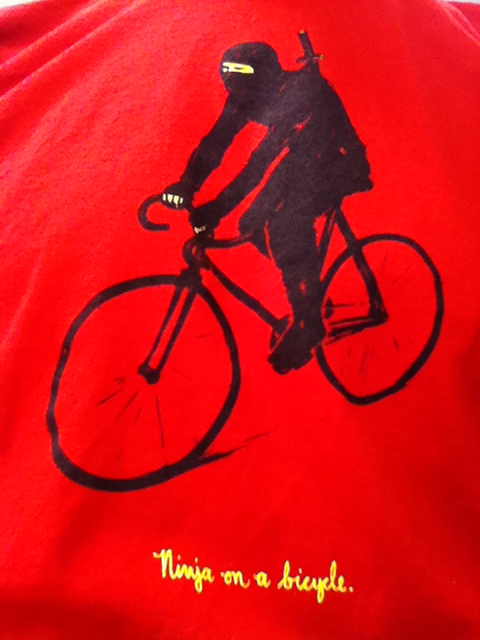I have a plan to raise $10,000 for some awesome organizations by Sept. 22, 2013 – the day I run in Ironman Lake Tahoe. Less than one month away! Raised so far: $9,282! Want to increase this total? Chip in a few bucks to one of our causes here!
A Wheelie, Wheelie Bad Bike Night
I knew better than to try and squeeze in two miles in the pool in the late afternoon. With the 20-minute time limit at our local gym, if others are waiting for a lane, getting in 2 miles is nearly impossible… unless you get super lucky, or are swimming at 3am. I was doing quite well this afternoon: 1200m warm-up, and a good chunk into my 10 x 100m interval set when the deluge hit. A swarm of folks ready to hop into the pool – most of them not even there to swim, but to do rehab walking exercises. I knocked off several more sets until the guilt started to creep in… and stopped after the 8th 100m interval. The swim felt good, but it was time to cut my losses and focus on the next workout for the day: the bike.
I got home, slathered on the sunscreen, pulled on the cooling sunsleeves, selected the kit for the day (my RadioShack/Nissan/Trek kit of the Swiss national champion – Fabian Cancellara aka Spartacus), prepared my hydration bottles, and started to roll my bike from the house out to the driveway… That is when I heard it. SQUEAK! I looked down at the bike, unsure where that noise could be coming from… rolled it forward a bit more, and after a couple of feet: SQUEAK!
Yep. Definitely the rear wheel. Another revolution forward: SQUEAK! Certainly a brake rub. Alright… open up the brakes a bit and recenter them… roll forward… SQUEAK!
The dreaded wheel wobble. Since I didn’t hit anything on my last ride, that means only thing: a broken spoke. Sure enough, there it was, on my triathlon bike training wheel!
Alright, I know I’m going to need to explain this… not the 4-year old getting his first bike training wheels. Since a set of racing wheels, particularly for triathlon, are going to run you between $2k and $6k for a set (really), you don’t want to ride and beat up on them every day. You buy a less expensive set of wheels, usually still quite expensive ($1k to $2k) for those in the triathlon gig – you want to train on aero wheels in order to maintain familiarity with crosswinds and other issues that you’ll face on race day. My training wheels are an aluminum-carbon aero hybrid that are fast, but not quite as aero and much heavier than my race day wheels.

What the bike pretty much looks like with the “training wheels” on – SRAM S80’s in back and S60’s in front. They are fast (used to be my racing wheels in past seasons), but are heavier than my current set of racing wheels.

This is what the bike looks like with the racing wheels installed. They are deeper and more aerodynamic (95mm deep front vs 60, and full disc rear vs 80mm in back), plus they are lighter than the training wheels. That is what they call a “win-win”!!! (picture from Ironman 70.3 St George earlier this year)
Anyway, back to the story. So, a spoke broke. No biggie, I’ll get that into a shop this next week and have a new one put in and have the wheel re-trued. Let’s just grab the racing wheels off my road bike. There are a lot of differences between triathlon/time-trial bikes and normal road bikes; wheels are one of these big differences. The triathlon bike is all about compromising weight in order to be aerodynamic; road bikes tend to focus on weight, with aerodynamic qualities being an extra bonus. I grabbed the wheels off the road bike, pumped them up a bit… and the rear wheel wouldn’t hold air! Drat!

My road bike (an old pic – there are some subtle updates since then) – it is race quality, down to the wheels. In fact, those are the wheels I installed on the triathlon bike tonight – notice that they aren’t as aero as the triathlon bike (these are only 42mm deep), but they are super-duper light and climb wicked fast. They just aren’t as fast in a straight line (don’t get me wrong, these are still plenty fast!)
Just pull the tire off, pop in a new tube, and I’m all good to go, right? Buzz! Wrong! I d0n’t ride the normal clincher & tube setup on my bikes any more. I ride tubulars (aka sew-ups and glue-ons) on my road bike and for my triathlon racing wheels, and a tubular-clincher tire (a tubular tire with a bead on it that hooks on to your standard clincher wheels) for my triathlon training wheels.
So. Why is that bad? Because it meant I had to remove the tubular tire, and all the glue, off the road bike wheels. And without tools, because the wheel is 100% carbon fiber – any ding or deep scratch can harm the structural integrity of the wheel. So I pried the tire off the wheel by hand – the glue was strong this time (a good thing when you’re riding) – cleaned the residue off, and went forward with installing a fresh new tire. Instead of actually using glue, I use a mounting tape for my tubulars (made by Tufo – this stuff is pretty killer). You run the tape around the rim, push it into place, stretch the tire over the tape, remove the tape’s protective film, inflate the tire… and done! In theory. In practice, it takes a while to get a tubular tire on the rim as they are designed to fit tight. It took a while, but I got the new tire on the wheel, the tape was set, and I was ready to ride.
Yes, I know you’re impatient right now trying to ask the question, probably something like: “If they’re so tricky to change, why use tubulars?” The answer, of course, is complex. Tubular tires and wheels are generally much lighter than usual clincher setups. Also, you can run them at higher pressures (I like to do that sometimes), they are far less prone to getting flats (especially if you use a sealant inside the tire), and even if you do get a flat, you can usually ride the flat tire home safely – something you dare not try on a standard clincher tire. Plus, it is the “pro standard”, and I’m a sucker for that type of thing; I am fairly certain I missed my calling in life and should have been in the pro peloton or become a professional triathlete. (No regrets – I have a great career and get to do those sports as hobbies).
Because of the time lost in diagnosing the broken spoke, fixing the flat tire, and dialing in the bike to the new wheel, I had to cut my planned 80-minute tempo ride back to an hour… because there were still a lot of things left to do in the real world… shopping, yardwork, eating… oh, and enjoying a wonderful Pinot Noir to celebrate the very last night in my 30’s…
Cheers!
Yes, part of the day was “wheelie, wheelie” bad. But I really don’t have anything to complain about, do I?

